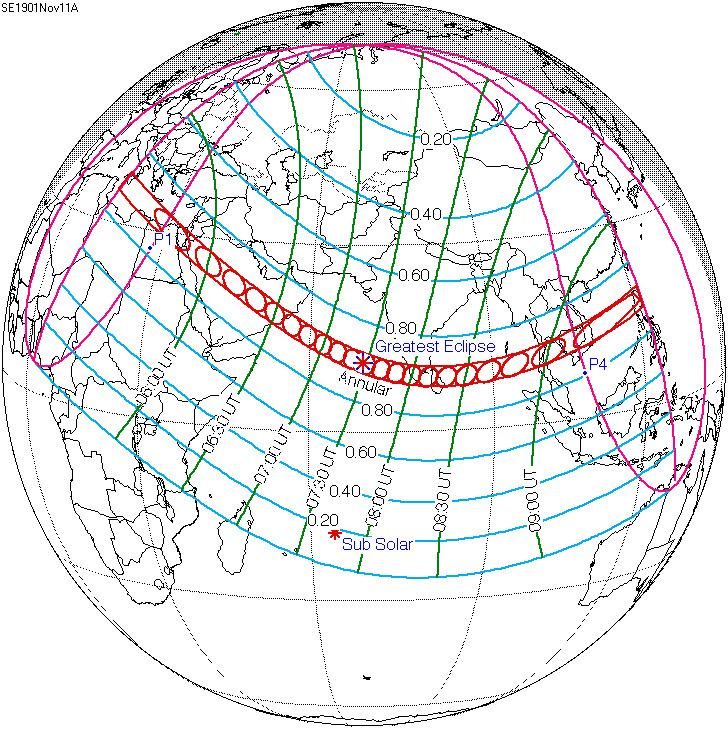Nature Annular Magnitude 0.9216 Max. width of band 336 km (209 mi) Start date November 11, 1901 | Gamma 0.4758 Duration 661 sec (11 m 1 s) Greatest eclipse 7:28:21 | |
 | ||
An annular solar eclipse occurred on November 11, 1901. A solar eclipse occurs when the Moon passes between Earth and the Sun, thereby totally or partly obscuring the image of the Sun for a viewer on Earth. An annular solar eclipse occurs when the Moon's apparent diameter is smaller than the Sun's, blocking most of the Sun's light and causing the Sun to look like an annulus (ring). An annular eclipse appears as a partial eclipse over a region of the Earth thousands of kilometres wide.
Contents
Solar eclipses 1901-1902
Each member in a semester series of solar eclipses repeats approximately every 177 days and 4 hours (a semester) at alternating nodes of the Moon's orbit.
Saros 141
Solar Saros 141 repeats every 18 years, 11 days and contains 70 events. The series started with partial solar eclipse on May 19, 1613. It contains annular eclipses from August 4, 1739 through October 14, 2460. There are no total eclipses in this series. The series ends at member 70 as a partial eclipse on June 13, 2857.
